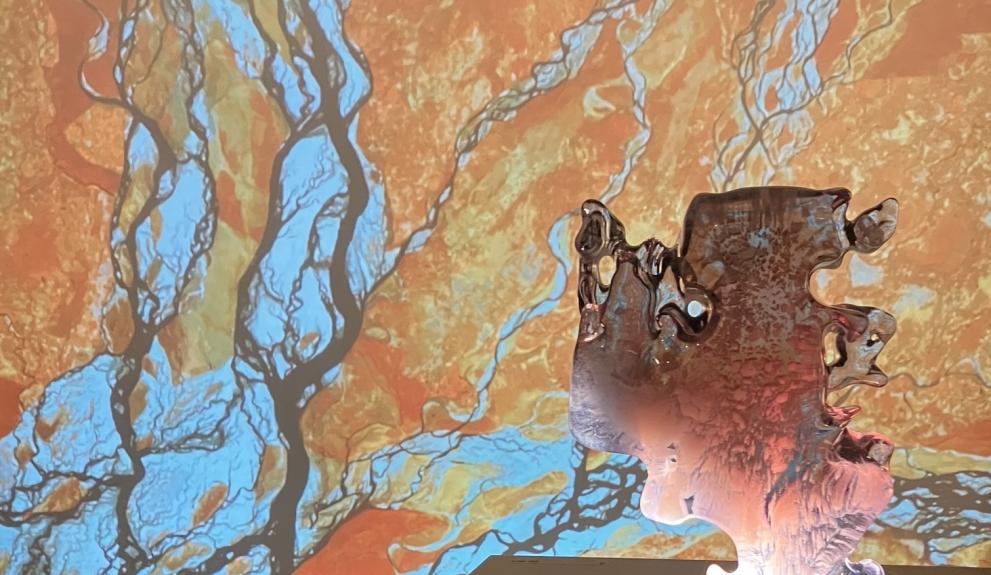
Abstract:
Specter[al]s of Nature is an artwork informed by scientific earth observation research on surface water changes. It is the result of speculative cartography inspired by the time maps in the Atlas of Global Surface Water Dynamics, which progresses into 3D water beings with ghostly margins and uncertain boundaries. Rather than being determined solely by the topography and depth of water bodies, Specters of Nature emphasizes the role of time as a third dimension, illustrating how human activities have irreversibly altered these ecosystems. Its primary objective is to stimulate critical thinking about our limited understanding of time and space, which often results in our disconnection from nature and actions that are detrimental to the environment. This project envisions a post-anthropogenic and decolonialized cartography, imaginatively addressing the expansive electromagnetic visual spectrum offered by remote sensing technology and its capacity for long-term documentation. Through the creative amalgamation of composite imagery derived from satellite technology, it presents a vivid depiction of a dynamic, living cartography that encompasses both human and nonhuman ways of seeing. Simultaneously, it compresses temporal changes spanning over four decades, providing a thought-provoking representation of the evolving landscape. In essence, Specter[al]s of Nature invites us to contemplate the intricate relationship between humanity, nature, and time, transcending conventional boundaries and inspiring us to reimagine our ways of mapping the world within the evolving tapestry of existence.
Medium: For the audiovisual Installation: Custom software, 1ch video (color) | 2ch sound, 4K, 15 min, loop. For the sculptures: Multi-Material 3D Print on Stratasys’ PolyJet J850™ Prime 3D Printer (Voxel-Printing); materials: VeroClear, VeroCyanVivid, VeroUltraWhite, VeroUltraBlack; various dimensions between 295W x 280H x 80D mm and 380 x 350 x 80 mm / Weight: between 3.1kg – 7.8kg.
Full essay coming soon!!
Credits:
Ingrid Mayrhofer-Hufnagl | Alan Belward & Elahe Rajabiani
In collaboration with: Luca de Felice, Peter Strobl, Maciej Krzysztowic (JRC); Lorenzo de Simone, Malgorzata Wrobel (NEB), Stratasys Ltd, & Benjamin Scoyez (sound engineer).
With the generous support of the Austrian Federal Ministry for Arts, Culture, Civil Service and Sport (BMKOES)/ Division IV: Arts and Culture
Related links:
- Residency Project: https://science-art-society.ec.europa.eu/specterals-nature
- Presentation of Residency @ JRC: https://science-art-society.ec.europa.eu/sites/default/files/video-thumbnails/2023-06/specterals%201%20-%20720WebShareName.mp4
- Specter[al]s of Nature website: https://www.airchitecturalminds.com/portfolio/93-spectrals-of-nature/
